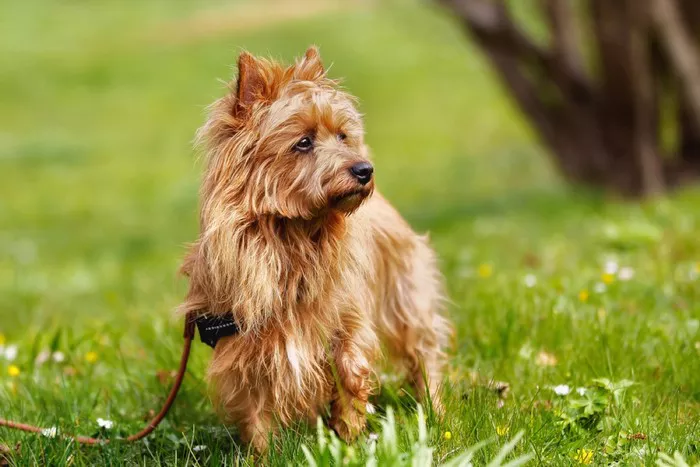Australian Cattle Dogs, also known as Blue Heelers or Queensland Heelers, are highly energetic and intelligent working dogs originally bred for herding livestock. Their endurance, agility, and sharp minds make them exceptional companions—but they also require careful attention to their exercise needs. In this article, we’ll explore how to tailor walking routines to keep your Australian Cattle Dog healthy, happy, and well-behaved.
Understanding the Australian Cattle Dog’s Energy Levels
A Breed Built for Work
Australian Cattle Dogs thrive on physical and mental stimulation. Historically, they worked long hours in harsh conditions, driving cattle across vast terrains. This heritage means they have exceptional stamina and a natural drive to stay active. Without adequate exercise, they may develop destructive behaviors like chewing, digging, or excessive barking due to pent-up energy.
Daily Exercise Requirements
Most experts agree that Australian Cattle Dogs need 90–120 minutes of exercise daily, split into multiple sessions. This should include:
Structured walks: Aim for brisk, purposeful walks rather than leisurely strolls.
High-intensity activities: Running, hiking, or playing fetch.
Mental challenges: Agility training, puzzle toys, or obedience drills to engage their sharp minds.
Factors That Influence Walking Time
Age and Life Stage
Puppies (under 12 months): Their growing joints are vulnerable, so avoid prolonged running or jumping. Focus on short, frequent walks (15–20 minutes, 3–4 times daily) paired with playtime.
Adults (1–7 years): This is their peak energy phase. Prioritize longer walks (45–60 minutes, twice daily) and incorporate off-leash play in secure areas.
Seniors (8+ years): Arthritis or reduced stamina may require shorter walks (20–30 minutes, twice daily) with gentle activities like swimming.
Weather and Season
Summer: Avoid midday heat, as asphalt can burn paw pads in seconds. Opt for early mornings or late evenings and carry water to prevent dehydration.
Winter: Midday walks are ideal for warmth, but watch for ice-melting chemicals, which can irritate paws.
Rainy days: Use a waterproof coat and dry your dog thoroughly afterward to prevent skin issues.
Structuring the Perfect Walk
Leash and Harness Choices
Avoid retractable leashes, which can encourage pulling and reduce control. Instead, use a 4–6-foot fixed-length leash paired with a Y-shaped harness to distribute pressure evenly and prevent neck strain.
Walking Techniques
Engage their instincts: Let them sniff and explore—this mentally tires them.
Practice commands: Use walks to reinforce “heel,” “leave it,” or “stop” to improve obedience.
Vary routes: New environments stimulate their curiosity and prevent boredom.
Post-Walk Care
Cool-down: Offer small amounts of water after exercise to avoid bloat.
Paw checks: Clean their paws to remove dirt, salt, or chemicals.
Reward calmness: Use treats or praise to reinforce relaxed behavior post-walk.
Common Mistakes to Avoid
Overlooking mental stimulation: A walk alone won’t satisfy their need for problem-solving. Add training or scent games.
Ignoring weather risks: Hot pavement or icy roads can injure paws.
Using the wrong gear: Retractable leashes or tight collars increase injury risk.
Skipping consistency: Irregular exercise schedules can lead to anxiety or hyperactivity.
Forcing socialization: Not all Cattle Dogs enjoy interacting with strangers or other pets—respect their boundaries.
Signs You’re Walking Enough (or Not Enough)
Healthy Indicators
- Calm demeanor at home.
- Willingness to nap after exercise.
- Maintains a healthy weight.
Red Flags
- Destructive chewing or digging.
- Restlessness or pacing.
- Excessive barking or attention-seeking.
Conclusion
Walking an Australian Cattle Dog isn’t just about physical exercise—it’s about fulfilling their instinctual needs as a working breed. By providing 90–120 minutes of daily activity, adapting to their age and environment, and incorporating mental challenges, you’ll nurture a balanced, contented companion. Always observe your dog’s behavior and adjust routines as needed to ensure their well-being.
Related Topics:
ARE AUSTRALIAN TERRIERS SMART?
ARE AUSTRALIAN TERRIERS ACTIVE?
WHAT ARE AUSTRALIAN TERRIERS KNOWN FOR?


